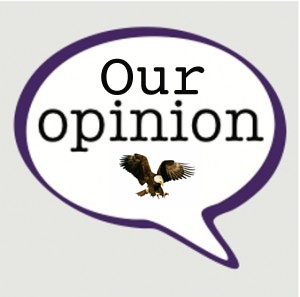EDITORIAL: Ann Arbor, AAPS and The University of Michigan—All For One and One For All
WARD 4 COUNCIL member Margie Teall and Ward 3 Council member Christopher Taylor recently co-sponsored a resolution objecting to an immense electronic sign the University of Michigan has placed on its own property adjacent to Stadium Boulevard. The sign is garish, plays videos and lights up the evening sky. Council members are worried that the sign will distract drivers. While we can all thank them for their solicitude, we remind City Council members that a 1,300 square foot marquee should be the least of their concerns so far as the city’s relationship with the University of Michigan goes.
The City Council’s Student Relations Committee has not met a single time since 2011. The City-School Committee that exists to foster a more productive relationship between Ann Arbor and the Ann Arbor Public Schools still lists former Superintendent George Fornero and former Board of Education member Randy Friedman as members.
While micro-managing University of Michigan officials, John Hieftje and City Council neglect to take advantage of opportunities for dialog or opportunities for collaboration with both the AAPS, as well as University of Michigan. The city and the AAPS struggle with deficits and service cuts. It’s incomprehensible that the City-School Committee hasn’t met since George Fornero headed the AAPS in 2003. The opportunities for collaboration range from transit and purchasing, to pool and park maintenance.
Insofar as the city’s relationship with U of M is concerned, it’s time for Council members to get serious. It’s a waste of time for them to pass a resolution about a marquee sign. Meanwhile, not a single one of them has spoken out about the University of Michigan’s unneighborly refusal to make annual good faith payments in lieu of taxes to the city. Harvard and MIT have done so to their host city, Cambridge, for decades.
While AAPS Board of Education member Susan Baskett sits on the Board of the AAATA, we’ve yet to see any significant strides toward a truly collaborative and comprehensive transit agreement between the AAPS and the AAATA. A getToSchool program, modeled on the getDowntown program, could help thousands of children and their families with transit to and from school daily.

